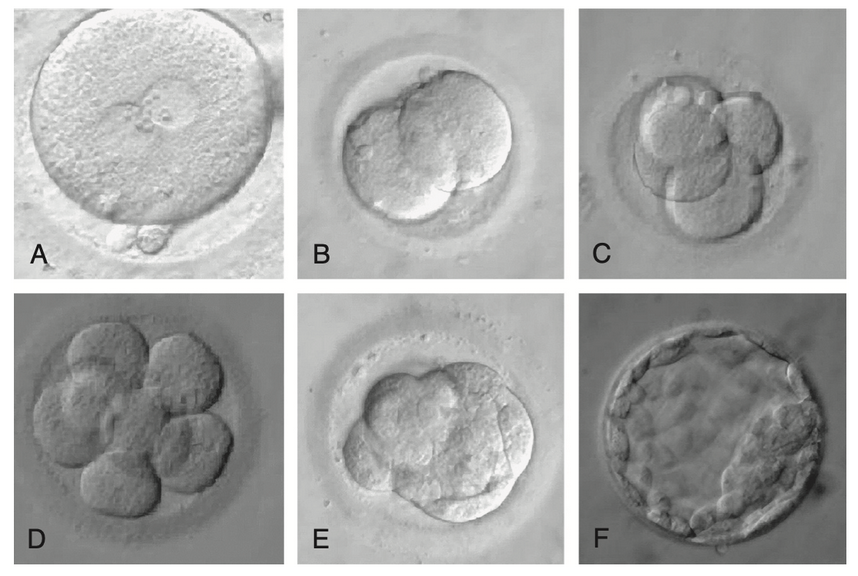What Does Embryo Grading Really Mean?
- legend family
- Jul 31
- 3 min read

During the IVF process, embryos are cultured in the lab and then evaluated based on their morphological features. Doctors assign a “grade” to assess embryo quality. This grading helps in selecting embryos with the best potential for transfer. However, it’s important to understand that embryo grading is not a guarantee of success—it’s a tool for screening, not a birth certificate.
1. Why Does the U.S. Primarily Use Blastocyst Transfer?
Unlike some countries or regions (such as China) where embryos may be transferred on Day 3, IVF in the U.S. almost universally involves blastocyst transfer (typically on Day 5 to 7). Here’s why:
Embryos that develop to the blastocyst stage have passed a “first round of natural selection,” and are typically of higher quality.
The blastocyst stage is more suitable for comprehensive genetic testing (e.g., PGT-A).
Implantation timing is closer to natural conception, improving implantation rates.
U.S. laws allow precise embryo screening and management (such as long-term freezing and genetic testing).
Tip: If you’ve undergone IVF in another country, your doctor may have transferred embryos on Day 3. In the U.S., Day 3 embryos are rarely transferred; instead, they’re cultured to the blastocyst stage before evaluation.
2. How Are Blastocysts Graded?
Most U.S. labs use the Gardner grading system:
The first number (1–6) refers to the degree of blastocyst expansion:
1 = early blastocyst
6 = fully hatched blastocyst
The first letter (A–C) assesses the inner cell mass (ICM), which will become the fetus:
A = tightly packed, many cells
B = loosely grouped
C = very loose and few cells
The second letter (A–C) assesses the trophectoderm (TE), which will become the placenta:
A = many well-organized epithelial cells
B = moderate quality
C = few, disorganized cells
Examples:
5AA = excellent-quality blastocyst
4BB = moderately good blastocyst, still with high success potential
3BC = average-quality blastocyst, but still capable of implantation
3. Does a Higher Grade Mean a Higher Success Rate?
American doctors typically explain it this way:
Higher embryo grade → better morphology → potentially higher chance of implantation—but not a guarantee.
Ultimately, success depends more on:
Chromosomal normalcy (PGT results)
Uterine environment
Maternal age
Key data point: Even a top-grade embryo like 5AA may fail to implant if chromosomally abnormal.
4. The Link Between PGT Results and Grading (This Is Important!)
In the U.S., most IVF patients—especially older women or those with repeated failures—opt for PGT-A (Preimplantation Genetic Testing for Aneuploidy).
It’s important to know:
Morphology ≠ Chromosomal health
The two systems serve different purposes and are not interchangeable
For example:
Some B-grade embryos are genetically normal
Some A-grade embryos may have chromosomal abnormalities
✅ In actual clinical practice, U.S. doctors prioritize PGT-normal embryos, regardless of grade.
5. How Should International Patients View Embryo Grading?
Embryo grade is just a reference point—not the deciding factor.
Make decisions based on PGT results and your doctor’s overall assessment.
There are real-life success stories of healthy babies born from B-grade and even C-grade blastocysts!
At Legend Family, we've seen patients who had multiple failed transfers, but finally succeeded with a CC-grade blastocyst—and are now happily holding their baby.
A Word of Advice: In the U.S., embryo grading is just one part of the equation. The true keys to success are:
A science-based medical strategy
A healthy uterine environment
Reasonable expectations
You don’t need to insist on transferring only AA-grade embryos. As long as the embryo is chromosomally normal and you align your body and mindset with your doctor’s plan, you have a real chance at welcoming a healthy baby.




Comments